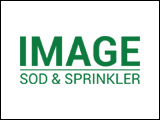The Agri-Food Traceability Coordinator with MAFRI says, in the event of an animal health emergency, premises identification offers a range of benefits that will help maintain market access.
“The Role of Premises Identification in Animal Health Emergencies” will be among the topics discussed next Wednesday and Thursday in Winnipeg as part of Hog and Poultry Days 2012.
Premises identification is one component of a national traceability system being developed for Canada and there is already a premises identification system and mapping system in place in Manitoba.
Heather Martens, the Agri-Food Traceability Coordinator with Manitoba Agriculture, Food and Rural Initiatives, notes the system has already been put to use.
Premises identification is a way of linking livestock and poultry to geographic locations for responding to emergencies.
A premises is just a land parcel where livestock or poultry are grown, kept, assembled or disposed of.
It would include places like farms, stables, vet clinics fairgrounds and assembly yards.
Animal health emergencies include things like animal diseases and natural disaster such as flooding or wildfires.
Premises identification has many benefits.
It allows for the rapid notification of livestock and poultry stakeholders, it helps prepare for animal health and food safety emergencies such as animal disease or a flood.
Premises identification also helps track animals in an emergency and can help sustain or increase market access.
Premises identification has been used for example to alert people that they were in the flood forecast area and to see if they needed assistance moving their animals so premises identification has already been used for animal health emergencies in Manitoba.
Martens notes any premises that has pigs will require a premises identification number, it’s the contact’s responsibility to apply for one and most commercial operations already have a premises identification number assigned.



